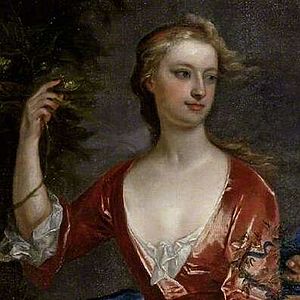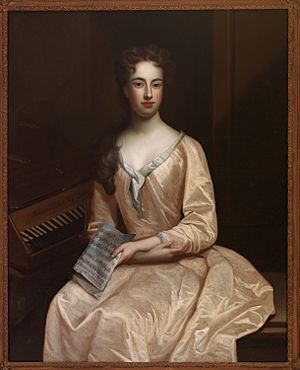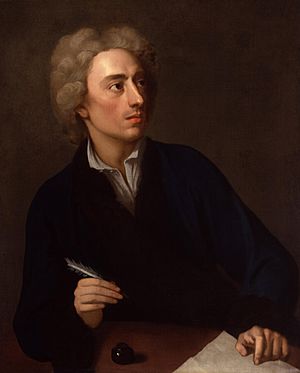Martha Blount facts for kids
Quick facts for kids
Martha Blount
|
|
|---|---|
 |
|
| Born | 15 October 1690 |
| Died | 1762 |
Martha Blount (1690–1762) was an English woman known for her friendships with many famous writers of her time. Her closest friend was the well-known poet Alexander Pope.
Early Life and Family
Martha Blount was born on October 15, 1690. Her family lived at Mapledurham House in Mapledurham, Oxfordshire, England. Her parents were Martha (born Englefield) and Lister Blount.
Martha and her sister, Teresa, received their education at a Benedictine convent in Paris. Their family was a respected Roman Catholic noble family in England.
Friendship with Alexander Pope
Martha and Teresa met Alexander Pope in 1707. Their mother's father, Anthony Englefield, introduced them.

From 1710 to 1715, Martha lived at Mapledurham with her widowed mother, her brother Michael, and her sister Teresa. During these years, Martha and Teresa were popular figures in society. The writer John Gay called them "two lovely sisters." Pope himself praised Martha's "resistless charms." Their portraits, still at Mapledurham, show them looking very charming together.
In 1715, Martha's brother Michael got married. This meant that Mapledurham House would not become Martha's property. After this, Martha, her mother, and her sister lived in a country home in Petersham and a town house in London.
Pope felt very sorry for Martha because of these changes in her life. He also thought her mother, sister, and brother were not always kind to her. At first, Pope was friends with both sisters. However, he later had a disagreement with Teresa. He showed so much support for Martha that it led to rumors about their friendship. Pope strongly denied these rumors in his letters.
In 1732, Martha Blount became seriously ill. She was cared for by Dr. John Arbuthnot. In 1733, Pope's mother passed away. Martha had always been very kind to Pope's mother. In 1735, Pope dedicated his poem 'Epistle on Women' to Martha. In this poem, he praised her "sense, good humour, and a poet."
In 1739, Martha's brother died. She was very fond of his children. In 1743, after her mother's death, Martha visited the Allen family at Prior Park, where Pope was also staying. This visit was not very pleasant. Martha felt left out of conversations. Pope defended Martha and advised her to leave.
Pope became ill a few weeks after this visit. Even during his final illness, he continued to defend Martha Blount.
Pope's Will and Later Life
When Alexander Pope died, he left many things to Martha Blount. He gave her £1000, 60 of his books, his household items, and the furniture from his grotto and garden. She also received any money left over after other gifts were paid.
Martha Blount continued to be a part of London's fashionable society after Pope's death. She lived in Berkeley Row near Hanover Square. Her relative, the traveler Henry Swinburne, visited her there. He described her as a small, neat, and pleasant old woman with easy and cheerful manners.
Martha Blount died in 1762 at the age of 72. In her will, she left the rest of her property to her nephew, Michael Blount, who lived at Mapledurham.
Sources


